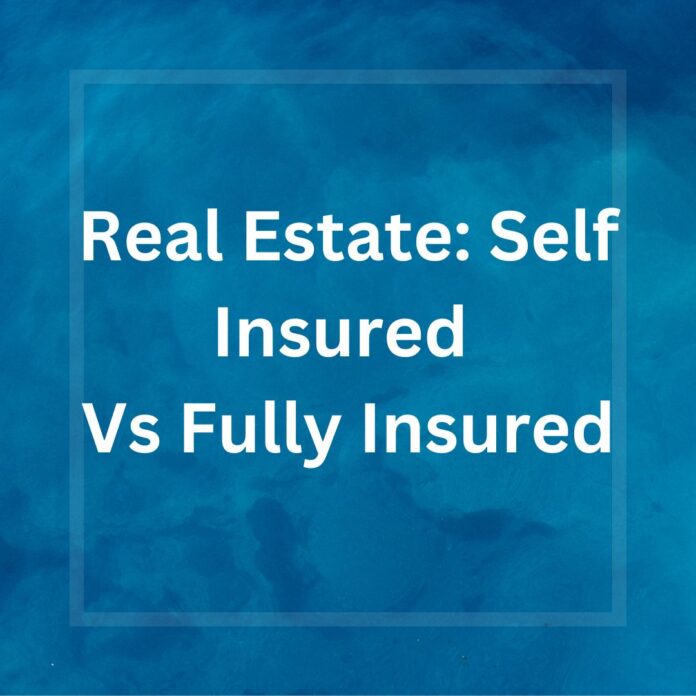When it comes to real estate insurance, property owners have the option to choose between a self-insured or a fully-insured policy. Understanding the differences between these options can help property owners make an informed decision that meets their specific needs. In this article, we will explore the benefits and drawbacks of self-insured vs fully-insured policies in real estate. Read about rental property calculator.
Self-Insured Real Estate
A self-insured policy is a type of insurance in which the property owner assumes the financial risk for any claims made against the property. In other words, the owner sets aside funds to cover any potential losses instead of paying premiums to an insurance company. This is a common option for larger commercial properties that can absorb the costs of any damages or losses.
Benefits of Self-Insured Policies
One of the primary benefits of a self-insured policy is that it provides more control over the claims process. Property owners can choose the amount of coverage they need and customize their policy to fit their specific needs. This can include selecting a specific deductible or setting up a reserve fund to take care of any potential losses. Another benefit of self-insured policies is the potential for cost savings. By cutting out the middleman (the insurance company), property owners can save on premiums and administrative fees. This can be particularly beneficial for properties with low-risk levels or low claim frequencies.
Drawbacks of Self-Insured Policies
One of the most significant drawbacks of self-insured policies is the financial risk that property owners assume. In the event of a major claim or disaster, the property owner will be responsible for covering the costs out of pocket. This can be particularly challenging for smaller property owners who may not have the financial resources to cover such losses. Another potential drawback of self-insured policies is the administrative burden. Property owners must set aside funds, manage claims, and ensure compliance with state and federal regulations. This can be time-consuming and require a significant amount of resources. Read about fire calculator.
Fully-Insured Real Estate
A fully-insured policy is a more traditional type of insurance in which the property owner pays premiums to an insurance provider in exchange for coverage. The financial risk for any claims made against the property is assumed by the insurance company.
Benefits of Fully-Insured Policies
One of the primary benefits of fully-insured policies is the financial protection they offer. Property owners pay premiums to the insurance company, which assumes the financial risk for any potential claims. This can provide peace of mind as well as financial security in the event of a major loss or disaster. Another benefit of fully-insured policies is the ease of administration. Property owners do not need to set aside funds or manage claims, as the insurance company handles these tasks. This can be particularly beneficial for smaller property owners who may not have the resources to manage a self-insured policy.
Drawbacks of Fully-Insured Policies
One of the primary drawbacks of fully-insured policies is the cost. Insurance companies charge premiums to cover the cost of claims and administrative fees. This can be particularly challenging for larger properties with high-risk levels or claim frequencies. Another potential drawback of fully-insured policies is the lack of control over the claims process. Property owners must rely on the insurance company to handle claims and may not have the same level of control as they would with a self-insured policy. Read about prorated rent calculator.
FInal Thoughts
Choosing between a self-insured and fully-insured policy in real estate depends on a variety of factors, including the size of the property, the level of risk, and the financial resources of the property owner. While self-insured policies provide more control and potential cost savings, they also come with significant financial risk and administrative burdens. Fully-insured policies offer financial protection and ease of administration but may come at a higher cost. Ultimately, property owners should evaluate their options carefully and consult with an insurance professional to determine the best policy for their specific needs. In some cases, a combination of self-insured and fully-insured policies may be the best approach. For example, a property owner may choose to self-insure for lower-risk events but opt for a fully-insured policy for catastrophic events or liability claims. It’s important to note that both self-insured and fully-insured policies have their place in the real estate industry. Property owners must evaluate their unique circumstances and consider the benefits as well as drawbacks of each option before making a decision. In summary, self-insured policies provide more control and potential cost savings but come with significant financial risk and administrative burdens. Fully-insured policies offer financial protection and ease of administration but may come at a higher cost. Property owners should carefully evaluate their options and work with an insurance professional to determine the best policy for their specific needs. By taking the time to make an informed decision, property owners can protect their investments and ensure they have the coverage they need.








